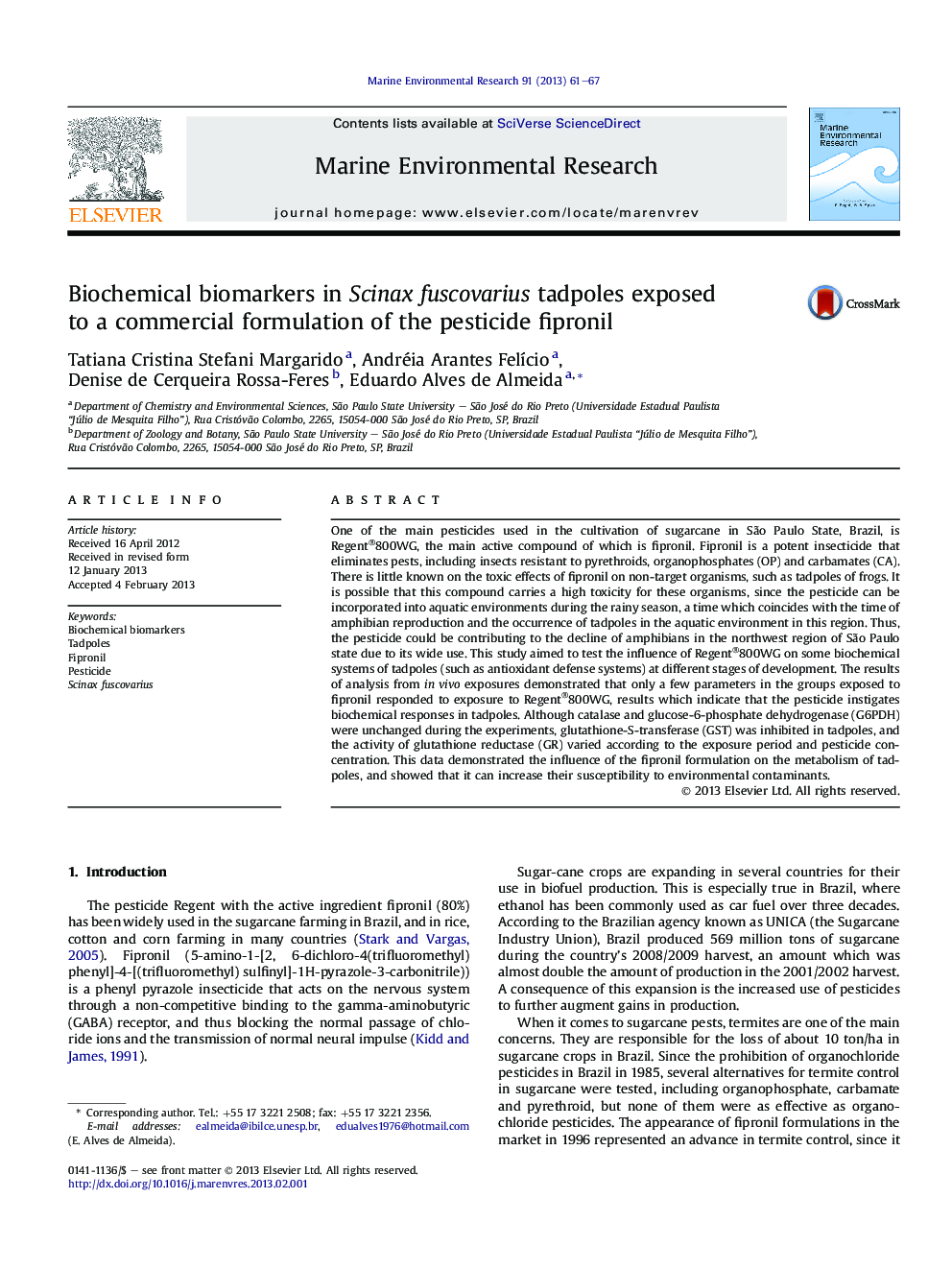| کد مقاله | کد نشریه | سال انتشار | مقاله انگلیسی | نسخه تمام متن |
|---|---|---|---|---|
| 4550848 | 1627591 | 2013 | 7 صفحه PDF | دانلود رایگان |

One of the main pesticides used in the cultivation of sugarcane in São Paulo State, Brazil, is Regent®800WG, the main active compound of which is fipronil. Fipronil is a potent insecticide that eliminates pests, including insects resistant to pyrethroids, organophosphates (OP) and carbamates (CA). There is little known on the toxic effects of fipronil on non-target organisms, such as tadpoles of frogs. It is possible that this compound carries a high toxicity for these organisms, since the pesticide can be incorporated into aquatic environments during the rainy season, a time which coincides with the time of amphibian reproduction and the occurrence of tadpoles in the aquatic environment in this region. Thus, the pesticide could be contributing to the decline of amphibians in the northwest region of São Paulo state due to its wide use. This study aimed to test the influence of Regent®800WG on some biochemical systems of tadpoles (such as antioxidant defense systems) at different stages of development. The results of analysis from in vivo exposures demonstrated that only a few parameters in the groups exposed to fipronil responded to exposure to Regent®800WG, results which indicate that the pesticide instigates biochemical responses in tadpoles. Although catalase and glucose-6-phosphate dehydrogenase (G6PDH) were unchanged during the experiments, glutathione-S-transferase (GST) was inhibited in tadpoles, and the activity of glutathione reductase (GR) varied according to the exposure period and pesticide concentration. This data demonstrated the influence of the fipronil formulation on the metabolism of tadpoles, and showed that it can increase their susceptibility to environmental contaminants.
► Biochemical effects (antioxidant enzymes) of a fipronil formulation were studied in tadpoles.
► Fipronil inhibited glutathione S-tranferase and had a puzzling effect in glutathione reductase.
► Fipronil caused no effect on catalase and glucose-6-phosphate dehydrogenase.
► Fipronil can increase the susceptibility of tadpoles to contaminants due to GST inhibition.
Journal: Marine Environmental Research - Volume 91, October 2013, Pages 61–67